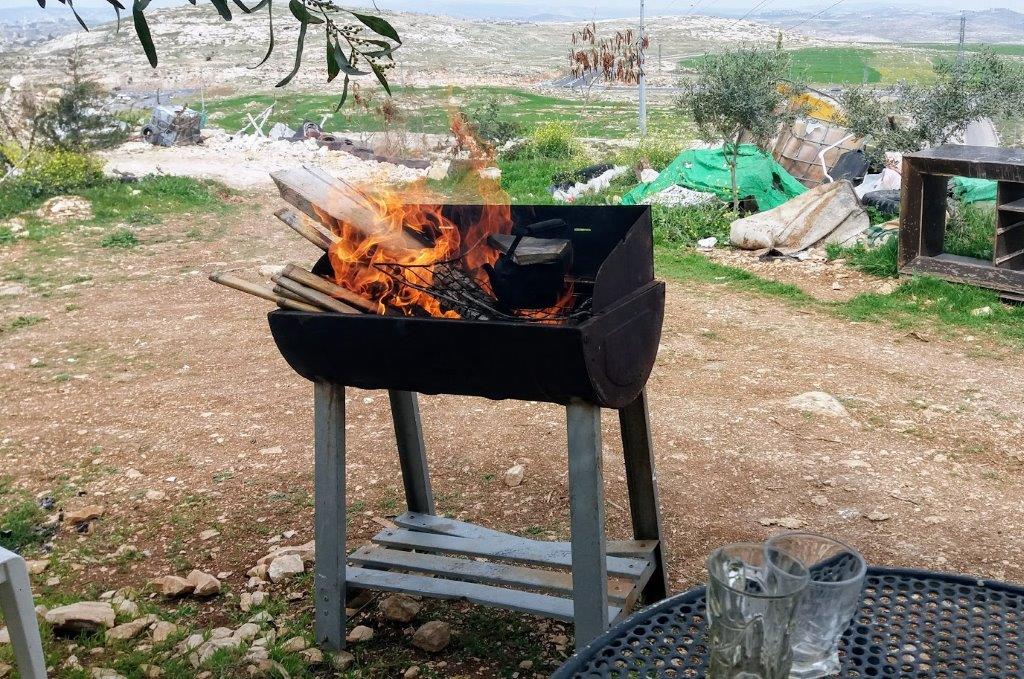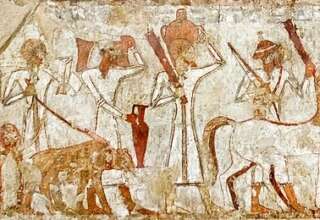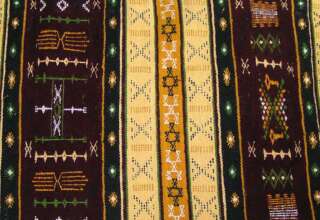
The intercultural situation in the Netherlands is going through a process of rapid change. As Boomkens (2010) wrote:
In the first decade of the twenty-first century, politics and everyday life in the Netherlands became polarized, under the influence of several conservative and populist movements that reflected a growing distrust of government and ‘politics as usual’, and a xenophobic and cultural conservative attitude towards migrants and migration, more specifically of Muslims and Islam (p. 307).
There is a range of studies on multiculturalism in the Netherlands, mostly on adolescents, investigating its complex relationship with variables like perceived threat and perceived social distance, knowledge and education, and contact with and prejudice toward immigrants. The Dutch were found to be slightly positive toward multiculturalism and this tendency remained stable in the first decade of this millennium, despite stricter regulations for immigration (Schalk-Soekar et al., 2008)(Van de Vijver et al., 2008). Taking a closer look, adolescents in the dominant culture expressed negative feelings towards Muslims, whereas stereotypes and symbolic threats, but not realistic threats, predicted their prejudice towards Muslims (Velasco Gonzalez et al., 2008). More contact with immigrants was related to less prejudice (Schalk-Soekar et al., 2008; Velasco Gonzalez et al., 2008). Individuals from the dominant culture also expected immigrants to adapt as much as possible, whereas immigrants (mostly Turkish and Moroccan) favored maintaining their culture (Verkuyten & Thijs, 2002; Schalk-Soekar et al., 2008). Individualism was found to have a negative effect on multiculturalism for both groups (Verkuyten & Martinovic, 2006).
My Friend is a Palestinian Bedouin: VIII. The Palestinians, the Israelis and the Dutch
Daniel Weishut, Psy.D.
Much could be written here about interculturality when it comes to Israeli and Palestinian societies, which provide the context of this study. I will suffice in providing a few notes on each of these cultures, fully aware that this does injustice. A more extensive analysis of these cultures is beyond the scope of this study. After that, I will provide some data about interculturality in the Netherlands; Dutch culture is part of my personal background and therefore relevant in this study as well.
The Palestinian Arabs
Hofstede (2001) found that there are differences among the nations within the Arab world, but in general, cultural dimensions were found to be rather similar. The Arab world, which is predominantly Muslim, is highly rule-oriented while inequalities of power and wealth have been allowed to grow within the society. Leaders have virtually ultimate power and authority and there is an expectation and acceptance that leaders will separate themselves from the group. Arab societies do not readily accept change and are risk adverse. They are collectivistic which is manifested in a close long-term commitment to the member ‘group’, that being a family, extended family, clan, tribe or extended relationships. Loyalty in a collectivist culture is paramount, and over-rides most other societal rules.
We may wonder though if the similarity found between the cultures in different Arab countries is not partially based on orientalism (Said, 1985; Varisco, 2007), a form of ethnocentrism and lack of knowledge of the specific Arab cultures by Westerners. For example, if we were to look into the issue of language, we would probably find that for many Europeans or Americans Arabic is perceived as just one language, despite the fact that there is enormous regional influence on word choice, syntax and pronunciation. Differences between sedentary and Bedouin (or rural) Arabic are to such an extent that people from different Arab countries may not understand one another (Varieties of Arabic, 2011). In fact, one study found that Arabs from the Gulf States were more collectivistic than those from Egypt, whereas both groups were more collectivistic than subjects from the United States (Buda & Elsayed-Elkhouly, 1998).
If we compare the Arab world with other cultural regions, we find that throughout the Arab world power distance is valued higher than in Europe or the United States, and so is collectivism. In the Arab world there is more uncertainty avoidance than in the United States, or in Western Europe, but less than within Mediterranean European countries (Hofstede, n.d. a). Throughout the Arab world there is a valuation of masculine traits over feminine traits (Al-Krenawi, 1999). The emphasis on masculinity is more than in Western Europe, comparable to the situation in Eastern Europe, and less than in the United States (Hofstede, n.d. a). However, within the Arab world there are differences between countries and changes over time. For example, one recent study found Syria to be more individualistic than as indicated in Hofstede’s original rankings (Merkin & Ramadan, 2010).
As regarding forms of communication, Arabs were described as making use of expressive body language and relatively loud in their speaking. In business, they may tend to a coercive style of interaction with subordinates. Furthermore, Arabs allow for relatively much bodily contact between individuals of the same sex, whereas public contact between individuals of the opposite sex is in many Arab societies not well accepted. Although Arab gender roles are changing, men are generally viewed as superior, and women in need of protection and guidance (Samovar et al., 2009).
Let us now take a closer look at the Palestinians. Palestinian Arabs live for the most part in the Palestinian Authority, Jordan and Israel, though substantial numbers live in Syria, Lebanon and other countries. In the context of the present study, I will refer only to those living in the Palestinian Authority. The population of the Palestinian Authority consists primarily of Muslims; Christians and others comprise less than two percent of the total population (Palestinian Central Bureau of Statistics, 2009). Palestinian culture is seen as an honor culture (Baxter, 2007; Robinson, 2008). The centrality of honor seems part of the Palestinian social unconscious. When honor is at stake, other options of experience, perceiving or coping may be overlooked.
For the Palestinian Arabs, enduring forms of violence, trauma and resistance became central aspects of daily life and culture. (Allen, 2008) wrote as follows about life in the Palestinian Authority:
The second Palestinian intifada against Israeli occupation, which began in September 2000, saw Palestinian areas repeatedly invaded and shelled by Israeli forces. […] Commemorative cultural production and basic acts of physically getting around that became central to the spatial and social practices by which reorientation and adaptation to violence occurred in the occupied Palestinian territories. […] Memorialization that occurs in storytelling, in visual culture, in the naming of places and moving through spaces is one way in which this happens. The concept of “getting by” captures the many spatial and commemorative forms by which Palestinians manage everyday survival (p. 453).
Also Hammack (2010) described how contemporary Palestinian youth engage with a tragic narrative of loss supported by the social structure of ongoing intractable conflict and Israeli military occupation. Furthermore, he related to the current ideological divisions within Palestinian society between secular and religious nationalism. Some studies have tried to link the exposure of Palestinian youth to political violence with levels of aggression. While an earlier study did not find such a link (Barber, 1999), a later study did (Qouta et al., 2008).
There are several studies on Palestinian adolescents and students. Although some of these studies referred to students in Israel and others to those in the Palestinian Authority, findings seem similar. Family life is highly important for the Palestinians. A study in the mid-nineties found that Palestinian adolescents have expectations for traditional family roles, similar to those of their parents) (Fronk et al., 1999). A couple of studies found that Palestinian students evaluated collectivistic values higher than did Jewish students (Sagie et al., 2005; Sagy et al., 2001). Palestinian Arab students were found to have strong identities, as concerning both their Arab and their Palestinian identity (Diab & Mi’ari, 2007). One study found that Palestinian students tend to distinguish between emotional and instrumental support and allocate sources of support accordingly; a tendency which is likely to have impact on friendships. Emotional support was sought within the social network and instrumental support was sought within the family (Ben-Ari, 2004).
I will expand on the relationships between Palestinians and Jews, and on a particular group of Palestinians, the Jahalin Bedouins, in later chapters.
The Israelis
The Israeli population is made up primarily of Jews (76%). Twenty percent are Arabs (most of which are Muslim), and 4% are of other ethnic groups. 63% of the Israeli population is either first or second-generation immigrants. Furthermore, 37% of the Israeli population is of Euro-American origin, 15% of African origin and 12% of Asian origin (Israel Central Bureau of Statistics, 2010). The State of Israel exists since 1948 and in its early years, Israel needed to absorb large waves of immigrants. These immigrants brought with them a variety of cultures. In an attempt to accommodate to the different cultural groups the idea of a social “melting pot” was created, in which “the interactions between the different groups yield a new essence, social and cultural, while the groups lose their original cultural attributes or have them considerably weakened” (Yuchtman-Yaar, 2005, p. 93). Israel is often seen as a Western democracy, but its commitment to the value of cultural pluralism – which is central in most Western democracies – does not seem to be strong. It was argued that the national agenda leaves no room for Israeli Palestinians, favors the culture and traditions of Jews of European and American origin and is biased against the cultures and traditions of Jews of Asian and African origin (Yonah, 1994). In recent years, the absorption of Ethiopian Jews and large numbers of immigrants from the former Soviet Union became a major socio-cultural challenge. Moreover, the complex situation of second generation immigrants called for dealing with issues such as transnationalism and inequalities based on race, nationality, religion, and citizenship (Elias & Kemp, 2010). As a result of the diversity of Israeli cultures, it is possible to recognize in Israeli society as a whole a blend of individualistic and collectivistic values (Halabi & Sonnenschein, 2007; Oyserman, 1993; Sagie et al., 2005).
Hofstede (2001) described Israel as a country with a diversity of cultural groups, and suggested that over the years there may have been value changes in this country, that are not necessarily reflected in his findings. He mentioned the value differences within Israel between Jews of Western and those of North African origin and the Arab population, the latter groups being more inclined to collectivism. As regarding the role of women, he related among others to the pressure for dual careers. Traditionally masculine functions are open to Israeli women, but to a greater degree than common in the United States, they are expected to become mothers and take care of the children. He referred to the exceptionally low level of power distance in Israel, which is comparable to those of North European countries. Furthermore, he suggested a link between Israel’s intense national conflict and its high level of uncertainty avoidance combined with a tendency to collectivism. This combination of value dimensions is comparable to that of several other countries in which there is relatively much internal conflict, like in Arabic speaking countries.
Within Israeli society there are several major conflicts. (Shimoni & Schwarzwald, 2003) described the situation as follows:
The conflict between religious and secular Jews, which originated in differing ideological standpoints, has spilled over to include territorial and resource issues. The conflict between the Western and Eastern ethnic groups, which originates in feelings of discrimination, has developed into cultural struggle. The conflict between Jews and Arabs, which originated in territorial struggle, has developed into a comprehensive struggle (p. 549)
Trauma, and in particular the Holocaust, survival and glory, and in particular the establishment of the State of Israel and its defense are central in Israeli culture. It was suggested that despite major changes in Israeli Jewish society through the years, conflict-supporting beliefs and emotions of fear and hatred have remained dominant and continue to obstruct possible peaceful resolution of the Israeli-Palestinian conflict (Bar-Tal et al., 2010). Rightfully or not, the notion that the world is out to get the Jews seems to have become part of the Israeli social unconscious.
The Dutch
As regarding religion, 48% of the population of the Netherlands is Christian (of various denominations), 42% is non-religious, 6% is Muslim, and 4% adheres to another religion (Centraal Bureau voor de Statistiek, 2009). In 2010, about 20% of the population of the Netherlands consisted of first or second generation immigrants, a little over half of these originating in non-Western countries (Centraal Bureau voor de Statistiek, 2011). The percentage of immigrants in the Netherlands is expected to continue its slow rise (Verbond van Verzekeraars, 2010).
Hofstede (n.d. a) wrote as follows:
The Netherlands is indicative of a society with more individualistic attitudes and relatively loose bonds with others. The populace is more self-reliant and looks out for themselves and their close family members. […] Privacy is considered the cultural norm and attempts at personal ingratiating may meet with rebuff. Due to the importance of the individual within the society, individual pride and respect are highly held values and degrading a person is not well received […]
Furthermore, Hofstede’s findings on the Netherlands indicate a low level of differentiation and discrimination between genders, and a cultural tenancy to reduce the level of uncertainty by enacting rules to cover most situations.
The notion that one needs to conform to written rules seems to have become part of the Dutch social unconscious. For many a Dutch person, it seems difficult to understand that life could be lived differently. The relative importance of rules seems to be in conflict with the idea of tolerance of other cultural expressions. Gordijn (2010) described this as follows:
The Dutch are famous for being, as they call it, ‘tolerant’ and they are also firmly convinced of having this positive quality. However, an important element of Dutch culture is a strong desire for conformity: if you want to be one of ‘the’ Dutch, you will have to become exactly like them. Those who do not conform to the values that are commonly accepted by the Dutch are being socially excluded. This contradiction between tolerance and desire for conformity is mainly a problem because of the lack of awareness of people about this part of the Dutch culture. Social practice is much more influenced by the above-mentioned sense of conformity than by this so-called ‘tolerance’ (p. 217).
The intercultural situation in the Netherlands is going through a process of rapid change. As Boomkens (2010) wrote:
In the first decade of the twenty-first century, politics and everyday life in the Netherlands became polarized, under the influence of several conservative and populist movements that reflected a growing distrust of government and ‘politics as usual’, and a xenophobic and cultural conservative attitude towards migrants and migration, more specifically of Muslims and Islam (p. 307).
There is a range of studies on multiculturalism in the Netherlands, mostly on adolescents, investigating its complex relationship with variables like perceived threat and perceived social distance, knowledge and education, and contact with and prejudice toward immigrants. The Dutch were found to be slightly positive toward multiculturalism and this tendency remained stable in the first decade of this millennium, despite stricter regulations for immigration (Schalk-Soekar et al., 2008)(Van de Vijver et al., 2008). Taking a closer look, adolescents in the dominant culture expressed negative feelings towards Muslims, whereas stereotypes and symbolic threats, but not realistic threats, predicted their prejudice towards Muslims (Velasco Gonzalez et al., 2008). More contact with immigrants was related to less prejudice (Schalk-Soekar et al., 2008; Velasco Gonzalez et al., 2008). Individuals from the dominant culture also expected immigrants to adapt as much as possible, whereas immigrants (mostly Turkish and Moroccan) favored maintaining their culture (Verkuyten & Thijs, 2002; Schalk-Soekar et al., 2008). Individualism was found to have a negative effect on multiculturalism for both groups (Verkuyten & Martinovic, 2006).








